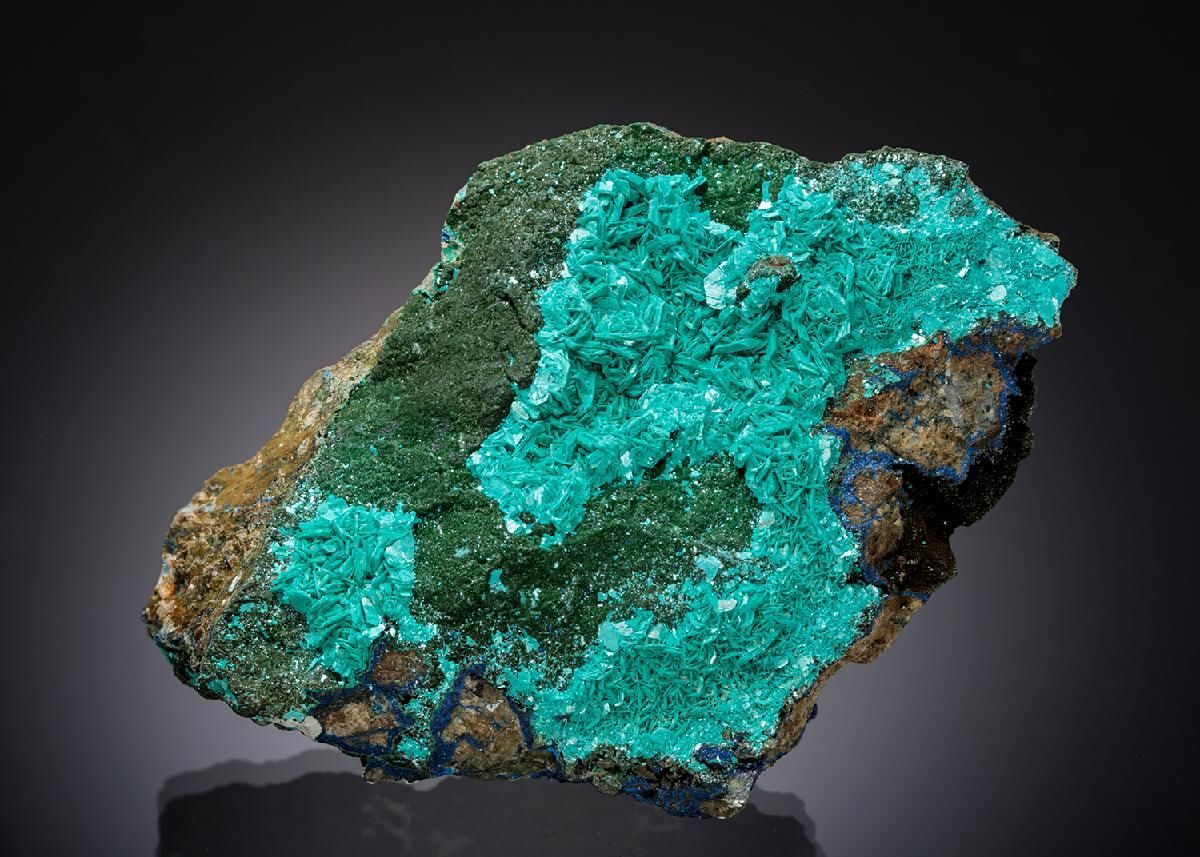
Chalcophyllite is a rare and stunning mineral that captures the imagination with its vibrant green-blue hues. Found primarily in copper-rich environments, this mineral is a favorite among collectors and geologists alike. But what makes chalcophyllite so special? For starters, its unique crystal structure and striking color make it a standout in any mineral collection. Additionally, chalcophyllite often forms in the oxidized zones of copper deposits, making it a fascinating subject for those interested in geology and mineralogy. Whether you're a seasoned collector or just curious about the natural world, these 20 facts about chalcophyllite will give you a deeper appreciation for this captivating mineral.
Key Takeaways:
- Chalcophyllite, a rare mineral with leaf-like crystals, is prized for its vibrant green color. It's found in oxidized copper deposits and is a sought-after addition to mineral collections.
- While chalcophyllite's softness limits practical uses, its beauty and rarity make it a favorite among collectors and a subject of study for geologists. Its unique properties and metaphysical beliefs add to its allure.
What is Chalcophyllite?
Chalcophyllite is a rare and fascinating mineral that captures the interest of geologists and collectors alike. Its vibrant green color and unique crystal structure make it a standout in any collection. Let's dive into some intriguing facts about this mineral.
-
Chalcophyllite is a copper arsenate mineral. This means it contains both copper and arsenic in its chemical composition.
-
The name "Chalcophyllite" comes from the Greek words "chalkos" (copper) and "phyllon" (leaf), referring to its leaf-like crystal formations.
-
This mineral is typically found in the oxidized zones of copper deposits. These are areas where copper ores have been exposed to oxygen and water, leading to the formation of secondary minerals like chalcophyllite.
-
Chalcophyllite crystals are usually tabular or platy, meaning they are flat and thin, resembling tiny leaves or plates.
-
The color of chalcophyllite ranges from emerald green to bluish-green, making it one of the more visually striking minerals.
Where Can You Find Chalcophyllite?
Chalcophyllite is not just found anywhere. Its rarity adds to its allure, making it a prized find for mineral enthusiasts. Here are some notable locations where chalcophyllite has been discovered.
-
One of the most famous locations for chalcophyllite is the Wheal Gorland mine in Cornwall, England. This mine has produced some of the finest specimens.
-
In the United States, chalcophyllite can be found in the Tintic District of Utah. This area is known for its rich mineral deposits.
-
Other notable locations include the Tsumeb Mine in Namibia and the Cap Garonne Mine in France. Both mines are renowned for their diverse and high-quality mineral specimens.
-
Chalcophyllite has also been found in Bolivia, particularly in the Chocaya mine. This location is known for its beautiful and well-formed crystals.
Unique Properties of Chalcophyllite
Chalcophyllite isn't just pretty to look at; it has some unique properties that make it stand out among other minerals.
-
This mineral has a hardness of 2 to 2.5 on the Mohs scale, making it quite soft and delicate. Handle with care!
-
Chalcophyllite has a vitreous to pearly luster, giving it a shiny, almost glass-like appearance.
-
It is transparent to translucent, meaning light can pass through it to varying degrees.
-
The mineral has a perfect cleavage in one direction, which means it can easily split along a flat plane.
-
Chalcophyllite is brittle, so it can break or crumble easily if not handled properly.
Uses and Significance of Chalcophyllite
While chalcophyllite may not have many practical uses, its significance lies in its beauty and rarity.
-
Chalcophyllite is primarily a collector's mineral. Its striking appearance makes it a sought-after piece for mineral collections.
-
Due to its copper content, chalcophyllite can sometimes be used as a minor ore of copper, although this is not common.
-
The mineral is often studied by geologists and mineralogists to understand the formation and alteration of copper deposits.
-
Chalcophyllite's vibrant color and unique crystal structure make it a popular subject for photography and mineral displays.
-
Some people believe that chalcophyllite has metaphysical properties, such as promoting emotional balance and enhancing creativity.
-
Despite its beauty, chalcophyllite is not used in jewelry due to its softness and brittleness. It is best appreciated as a display specimen.
Chalcophyllite is a captivating mineral with a rich history and unique properties. Whether you're a seasoned collector or just starting out, this mineral is sure to add a touch of natural beauty to any collection.
The Final Word on Chalcophyllite
Chalcophyllite, with its striking blue-green hues, is a mineral that captures the imagination. Found primarily in copper-rich areas, this mineral is a rare gem for collectors and geologists alike. Its unique crystal structure and vibrant color make it stand out among other minerals. Beyond its beauty, chalcophyllite tells a story of geological processes and the Earth's history. Whether you're a seasoned collector or just curious about minerals, chalcophyllite offers a fascinating glimpse into the natural world. Remember, handling this mineral with care is crucial due to its delicate nature. So, next time you come across chalcophyllite, take a moment to appreciate its rarity and the wonders of the Earth it represents. Happy collecting!
Frequently Asked Questions
Was this page helpful?
Our commitment to delivering trustworthy and engaging content is at the heart of what we do. Each fact on our site is contributed by real users like you, bringing a wealth of diverse insights and information. To ensure the highest standards of accuracy and reliability, our dedicated editors meticulously review each submission. This process guarantees that the facts we share are not only fascinating but also credible. Trust in our commitment to quality and authenticity as you explore and learn with us.
